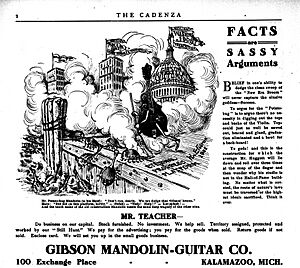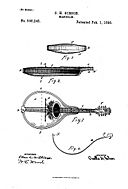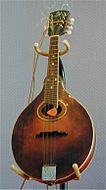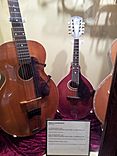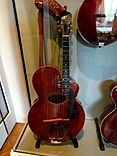Orville Gibson facts for kids
Quick facts for kids
Orville Gibson
|
|
|---|---|
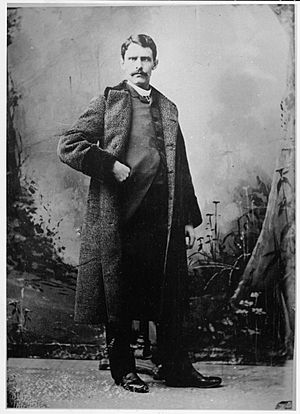
Orville Gibson (pre 1910)
|
|
| Born |
Orville H. Gibson
May 8, 1856 Chateaugay, New York, United States
|
| Died | August 19, 1918 (aged 62) Ogdensburg, New York, United States
|
| Occupation | Inventor and company founder |
Orville H. Gibson (born May 1856 – died August 19, 1918) was a skilled instrument maker, also called a luthier. He started the famous Gibson Guitar Company in Kalamazoo, Michigan in 1902. His company made many musical instruments, including guitars and mandolins.
Orville's first known instrument was a special 10-string mandolin-guitar from 1894. His mandolins were very different from others made before. Music expert Paul Sparks said they were "unlike any previous flatback instrument." Gibson's company made instruments of very high quality. They also did a great job of advertising them.
Contents
How Orville Gibson Started
Orville Gibson began making instruments in 1894. He worked from his home workshop in Kalamazoo, Michigan. In 1898, he received a patent for his new mandolin design.
Orville did not have any formal training in instrument making. Yet, he created a completely new style of mandolin and guitar. His designs were like violins, with curved tops and bottoms. These parts were carved into shape, not pressed or bent. The sides were also carved from a single block of wood. This was different from using bent wood strips.
More importantly, his instruments were louder and stronger. Musicians quickly wanted more instruments than he could make alone.
Founding the Gibson Company
Because of Orville Gibson's great ideas, five businessmen from Kalamazoo formed a company. They started the Gibson Mandolin-Guitar Mfg. Co., Ltd., in 1902.
Soon after the company began, the leaders decided something important. They said Orville H. Gibson would only be paid for the time he actually worked for the company. It is not clear if he worked there full-time after that. He might have been a consultant. Julius Bellson wrote in his 1973 book, The Gibson Story, that Orville Gibson had "visions and dreams that were considered eccentric."
Gibson's Impact on Music
Orville and his company used music teachers to help sell their instruments. They also used strong advertisements in print. They wanted to replace the older, round-backed mandolins. They succeeded in the mandolin market. They stopped the making of round-backed instruments in the U.S.
His guitars were also very important. The designs of his guitars can still be seen in modern jazz guitars today.
According to George Gruhn, the idea of carving the tops and bottoms of instruments came from Gibson. This idea was not based on any old mandolin or guitar traditions. He was inspired by how violins were carved. However, he did not use violin making methods for his own instruments.
Famous Gibson Instruments
Gibson's company worked with instrument designer and sound engineer Lloyd Loar. Together, they created the Gibson F-5 mandolin. Paul Sparks said this mandolin was known as "the finest flat-back mandolin ever produced." Loar also designed the L-5 guitar.
Loar added new features, like f-holes instead of round or oval sound-holes. F-holes are another feature from the violin family. They were brought to the mandolin. Bluegrass musicians love these mandolins. However, classical musicians, for whom they were designed, have mixed feelings about them. The L-5 guitar became very popular with jazz musicians.
Orville Gibson's Later Life
Starting in 1908, Orville Gibson received a salary from the Gibson Mandolin-Guitar Manufacturing Co., Limited. He was in hospitals several times between 1907 and 1911. In 1916, he was hospitalized again.
Orville Gibson passed away on August 19, 1918. He was 62 years old. He died at St. Lawrence State Hospital in Ogdensburg, New York. Orville Gibson is buried at Morningside Cemetery in Malone, New York.
Gibson was born in Chateaugay, New York. Records show he was born in May. His obituary, published on August 21, 1918, stated he died on August 19. His funeral was held at his brother O. M. Gibson's home on August 21.
See also
 In Spanish: Orville Gibson para niños
In Spanish: Orville Gibson para niños


